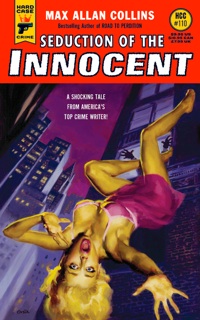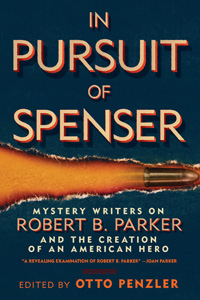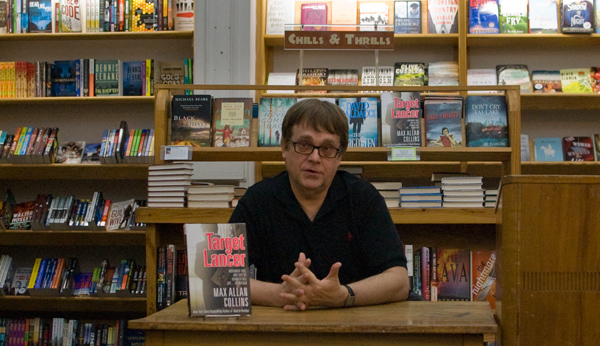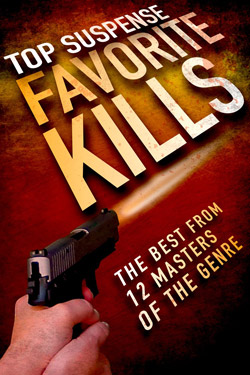Most people checking in with me here know that I was a big fan and later friend of Donald E. Westlake. In fact, Don was a mentor who helped me get my first novel, BAIT MONEY, into print. This was especially gracious considering that my Nolan character is so blatantly derived from his Parker.
Parker novels have been the source for a number of films, notably POINT BLANK (a ‘60s classic), THE OUTFIT, THE SPLIT and PAYBACK (in two versions). There have been several foreign adaptations as well, including a Jean Luc Godard travesty. Fans of the novels Don wrote as “Richard Stark” tend to be pretty hard on these films, though POINT BLANK is generally revered. Don never allowed Parker to be called “Parker” in any of the movies (Lee Marvin plays “Walker” in POINT BLANK) to guard against unwanted sequels.

Now, for the first time, a film uses the name Parker – in fact, it’s called PARKER. The title is probably the worst thing about this strong, tough little crime movie. Parker is a cult character and all of the fans of the books couldn’t fill enough theaters to make a ripple. So why would you call the movie PARKER? Maybe for whatever stupid reason that somebody decided to call a movie JACK REACHER. Those aren’t movie titles, they’re suicide notes.
Barb and I love the over-the-top TRANSPORTER and CRANK movies with Jason Statham, but almost nothing else he’s made is worth a damn. PARKER is. It’s very tough, with plenty of action, but also the kind of character bits that represent the oddball humans who (in the novels) often drift into Parker’s orbit (represented here chiefly by a real estate agent, well-played by Jennifer Lopez). Many touches reveal the director and screenwriter are familiar with the Parker novels in general – Parker calls his heist victims by their first names to put them at ease, he is loyal to his girl friend Claire despite temptations otherwise, he operates by a code that is harsh but fair, and he shows little if any emotion. The screenplay is a fairly faithful rendition of the Parker novel FLASHFIRE, with some POINT BLANK elements stirred in. It’s not the classic POINT BLANK that is, though PARKER is ultimately more like the novels than that great film. The only other Parker movie to rival PARKER is THE OUTFIT with Robert Duvall.
However…PARKER was disliked by many critics, and apparently did only mediocre business on its opening weekend (the audience we saw it with loved it, even applauding at the end). And a good share of the hardcore Parker fans are unhappy with the film. Check this out at the Violent World of Parker site, and be sure to read my comments.

Two other quick notes. We also saw HANSEL AND GRETEL: WITCH HUNTERS. Why did we go? I get cabin fever, working on a book (and I have just started THE WRONG QUARRY), and have to get out and do something – in Muscatine, Iowa, a movie is pretty much it. The reviews have been dismal, though seem to have been written by people who either haven’t seen the movie or had already decided their opinion of it before doing so. One of the producers is Will Ferrell, which indicates that a lot of reviewers are not understanding what audiences seem to: it’s spoof. It’s a comedy. Not an unintentional comedy, but a send-up of all these dumb serious “fairy tale” movies like RED HIDING HOOD. It’s a combo of EVIL DEAD and RESIDENT EVIL. If you like either or both of those, you will probably enjoy this one.
A final movie note: I loved (and still do) RUSHMORE by director Wes Anderson. But virtually everything he’s done since has seemed precious and disorganized to me, and I really, really hated THE FANTASTIC MR. FOX. But my son and his smart wife encouraged me to take a look at MOONRISE KINGDOM. I did, and they are right – it is a wonderful movie that would have been high on my best of 2012 list, had I seen it sooner. It is precious – or, as some smarty-pants critics like to say, “twee” – but it’s also charming and a very well-plotted, beautifully characterized story of young love. Funny as hell, too. Also the best boy scout movie ever made – even better than HENRY ALDRICH, BOY SCOUT (and those who know me well will understand that this is not sarcasm, but high praise).

The positive reviews about SEDUCTION OF THE INNOCENT just keep rolling in, I’m pleased to say. Like this one from the always insightful Craig Clarke.
And this short sweet write-up.
Plus this even shorter and sweeter one.
On the other hand, there’s this generally positive, amusingly written but patronizing review. Could we please ban the use of the pretentious term “trope”? But if we do use it, can we please not affix needless adjectives like “well-worn”? And can reviewers quit apologizing for liking something?
Finally, here’s a pleasant surprise – a late review of the first Nate Heller JFK trilogy novel, BYE BYE, BABY.


